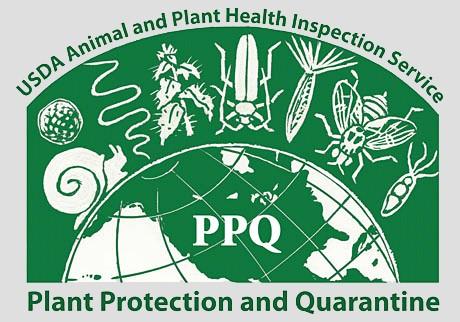
Lecture25.Management-2023 (1)
![]()
Main Concepts Today
Importance of disease management
Disease management vs. disease control
Disease management concepts
exclusion
avoidance
eradication
protection

S. N. Jeffers, 2010
Disease Development:![]()
Plant Disease Triangle
Susceptible Virulent
Host Pathogen
Disease
(over time)
Conducive
Environment
Management vs. Control
Disease control – the “old school” approach…
implies total elimination of the problem
usually not possible or necessary
often not practical – too costly or other consequences
Disease management – a more progressive approach
implies an on ongoing process to keep disease levels manageable and below economic thresholds
economic threshold = the level of disease at which treatment will provide an economic return • meaning: it’s cost effective to manage the disease
Therefore, management is the better approach
Know Your Problem!
First step to effective disease management is accurate diagnosis of the problem!
•Why??
symptoms of some diseases are not diagnostic
i.e., different diseases have similar symptoms
management strategies for different diseases can vary dramatically
root rots are a good example!
Integrated Disease Management
An integrated approach is the most effective strategy for long-term, sustained disease management
• Integrated disease management (IDM)
or IDM = “intelligent” disease management
taking advantage of all possible management options
requires a basic understanding of pathogen biology and disease epidemiology
pathogen survival & reproduction – monocyclic vs. polycyclic
environmental effects on disease
host susceptibility and resistance, planting date, etc.
Management Concepts vs. Options
Management concepts = the big picture
exclusion – targets the pathogen
avoidance – targets the environment
eradication – targets the pathogen
protection – targets the host
• Management options = specific control practices used to achieve effective disease management
legal and regulatory actions
cultural practices
pesticides
biological controls
host resistance
Exclusion
Targets the pathogen component of D

Goal: Exclude the pathogen
prevent introduction of a pathogen to a field, farm, nursery, state, country, continent
Regulatory and legal restriction on movement of plants and soil
quarantines, inspections, certifications
Use of pathogen-free seeds, propagation material, and plants
introduced pathogens have resulted in some of the most devastating diseases on a worldwide basis— throughout history!
Quarantines and Inspections:![]()
Federal Agencies
APHIS: Animal and Plant Health
Inspection Service
specific charge: “Protecting American
Agriculture”
 responsible for federal quarantines • PPQ: Plant Protection and
responsible for federal quarantines • PPQ: Plant Protection and
Quarantine – branch of APHIS
mission: “APHIS-PPQ safeguards agriculture and natural resources from the risks associated with the entry, establishment, or spread of animal and plant pests and noxious weeds.”
conducts inspections & certifications
Quarantines and Inspections:![]()
State Agencies
SC Department of Plant Industry
 “…to protect South Carolina's agricultural resources and natural ecosystems from the introduction and spread of plant and honeybee pests and invasive species…”
“…to protect South Carolina's agricultural resources and natural ecosystems from the introduction and spread of plant and honeybee pests and invasive species…”conducts local inspections
Cooperative Agricultural Pest
Survey (CAPS)
another branch of APHIS that surveys for exotic pests
functions at the state level
Plum pox virus, Phytophthora ramorum, citrus greening
![]()
![]()
![]() Insect-proof screens on greenhouse openings to exclude arthropod vectors of viruses
Insect-proof screens on greenhouse openings to exclude arthropod vectors of viruses
![]()
Avoidance
Targets the environment component

Goal: Avoid exposure to inoculum and favorable environmental conditions
Avoiding inoculum
don’t plant where a known pathogen is present!!
can be on a local, national, international level • gardens, fields, regions, etc.
grow ornamental plants in soilless media in pots to avoid soilborne pathogens
like species of Fusarium, Pythium, Phytophthora, Rhizoctonia
![]()
Avoidance
Targets the environment component

Goal: Avoid exposure to inoculum and favorable environmental conditions
Avoiding a conducive environment
▪ choice of or preparing a planting site
plant in well-drained soil to avoid damping-off & root pathogens
grow seed crops in arid climates to avoid seed-borne pathogens
time of planting
• plant when conditions are less conducive for infection and more favorable for plant growth
avoid cool, damp soil – which can slow plant growth & favor the pathogen
• know the time of the last frost in your area ▪ to avoid predisposing abiotic injuries & stresses
![]()
![]()
![]()
![]() Phytophthora root rot on plants that stayed too wet at the low end of a sloped bed where water accumulates
Phytophthora root rot on plants that stayed too wet at the low end of a sloped bed where water accumulates
Eradication
Targets the pathogen component of D

Goal: Eradicate or eliminate pathogen inoculum
this targets survival structures and primary inoculum
Cultural practices
crop rotation/fallow/flooding: reduce pathogen survival
eliminate alternate or alternative hosts
sanitation of tools and equipment
heating: composting, solarization, burning, steam
Chemicals: pesticides, fumigants, disinfestants
Biologicals: introduce or promote beneficial microbes
green manures, organic amendments
![]()
![]()
![]()
![]()
Protection
Targets the host component of D

Goal: Protect the host from infection
so identify periods when plants are most susceptible
Cultural practices: to favor plant/inhibit pathogen
mulches: organic, plastic – prevents splashing
manipulate plant nutrition and soil pH
water management: soil drainage, leaf wetness


through irrigation, plant spacing, row orientation
Chemicals: fungicides, antibiotics, nematicides, insecticides
Biologicals: antagonists and competition
Host manipulation: can be a very effective first-line of defense – like resistance, tolerance, cross protection
![]()
![]()
Logical Order to Implementing
Disease Management Concepts![]()
1. Exclusion
• keep pathogens out if at all possible
2. Avoidance
• if you cannot keep pathogens out, then avoid exposure to inoculum or environmental conditions conducive to disease development
3. Eradication
• if pathogens are present, try to eradicate survival propagules and sources of primary inoculum
4. Protection
• if all else fails, protect the plant from infection…
Wrapping Things Up…
More oral presentations today in lab…
presentations on Tuesday went well
PDP Papers: Due today – by 11:59 pm
submit through Canvas & Turnitin
Review session: Friday 08 Dec @ 9:00 AM
here in this room and via Zoom
• Online Course Evaluation – please do this…
▪ ***bonus points as incentive
Final exam: Friday 15 Dec @ 8:00 – 10:30 AM
175 points = 100 points on new information
+ 75 points on cumulative information
similar format to other exams
Contact me or Linus if you have questions

Lecture25.Management-2023 (1)
![]()
Main Concepts Today
Importance of disease management
Disease management vs. disease control
Disease management concepts
exclusion
avoidance
eradication
protection

S. N. Jeffers, 2010
Disease Development:![]()
Plant Disease Triangle
Susceptible Virulent
Host Pathogen
Disease
(over time)
Conducive
Environment
Management vs. Control
Disease control – the “old school” approach…
implies total elimination of the problem
usually not possible or necessary
often not practical – too costly or other consequences
Disease management – a more progressive approach
implies an on ongoing process to keep disease levels manageable and below economic thresholds
economic threshold = the level of disease at which treatment will provide an economic return • meaning: it’s cost effective to manage the disease
Therefore, management is the better approach
Know Your Problem!
First step to effective disease management is accurate diagnosis of the problem!
•Why??
symptoms of some diseases are not diagnostic
i.e., different diseases have similar symptoms
management strategies for different diseases can vary dramatically
root rots are a good example!
Integrated Disease Management
An integrated approach is the most effective strategy for long-term, sustained disease management
• Integrated disease management (IDM)
or IDM = “intelligent” disease management
taking advantage of all possible management options
requires a basic understanding of pathogen biology and disease epidemiology
pathogen survival & reproduction – monocyclic vs. polycyclic
environmental effects on disease
host susceptibility and resistance, planting date, etc.
Management Concepts vs. Options
Management concepts = the big picture
exclusion – targets the pathogen
avoidance – targets the environment
eradication – targets the pathogen
protection – targets the host
• Management options = specific control practices used to achieve effective disease management
legal and regulatory actions
cultural practices
pesticides
biological controls
host resistance
Exclusion
Targets the pathogen component of D

Goal: Exclude the pathogen
prevent introduction of a pathogen to a field, farm, nursery, state, country, continent
Regulatory and legal restriction on movement of plants and soil
quarantines, inspections, certifications
Use of pathogen-free seeds, propagation material, and plants
introduced pathogens have resulted in some of the most devastating diseases on a worldwide basis— throughout history!
Quarantines and Inspections:![]()
Federal Agencies
APHIS: Animal and Plant Health
Inspection Service
specific charge: “Protecting American
Agriculture”
 responsible for federal quarantines • PPQ: Plant Protection and
responsible for federal quarantines • PPQ: Plant Protection and
Quarantine – branch of APHIS
mission: “APHIS-PPQ safeguards agriculture and natural resources from the risks associated with the entry, establishment, or spread of animal and plant pests and noxious weeds.”
conducts inspections & certifications
Quarantines and Inspections:![]()
State Agencies
SC Department of Plant Industry
 “…to protect South Carolina's agricultural resources and natural ecosystems from the introduction and spread of plant and honeybee pests and invasive species…”
“…to protect South Carolina's agricultural resources and natural ecosystems from the introduction and spread of plant and honeybee pests and invasive species…”conducts local inspections
Cooperative Agricultural Pest
Survey (CAPS)
another branch of APHIS that surveys for exotic pests
functions at the state level
Plum pox virus, Phytophthora ramorum, citrus greening
![]()
![]()
![]() Insect-proof screens on greenhouse openings to exclude arthropod vectors of viruses
Insect-proof screens on greenhouse openings to exclude arthropod vectors of viruses
![]()
Avoidance
Targets the environment component

Goal: Avoid exposure to inoculum and favorable environmental conditions
Avoiding inoculum
don’t plant where a known pathogen is present!!
can be on a local, national, international level • gardens, fields, regions, etc.
grow ornamental plants in soilless media in pots to avoid soilborne pathogens
like species of Fusarium, Pythium, Phytophthora, Rhizoctonia
![]()
Avoidance
Targets the environment component

Goal: Avoid exposure to inoculum and favorable environmental conditions
Avoiding a conducive environment
▪ choice of or preparing a planting site
plant in well-drained soil to avoid damping-off & root pathogens
grow seed crops in arid climates to avoid seed-borne pathogens
time of planting
• plant when conditions are less conducive for infection and more favorable for plant growth
avoid cool, damp soil – which can slow plant growth & favor the pathogen
• know the time of the last frost in your area ▪ to avoid predisposing abiotic injuries & stresses
![]()
![]()
![]()
![]() Phytophthora root rot on plants that stayed too wet at the low end of a sloped bed where water accumulates
Phytophthora root rot on plants that stayed too wet at the low end of a sloped bed where water accumulates
Eradication
Targets the pathogen component of D

Goal: Eradicate or eliminate pathogen inoculum
this targets survival structures and primary inoculum
Cultural practices
crop rotation/fallow/flooding: reduce pathogen survival
eliminate alternate or alternative hosts
sanitation of tools and equipment
heating: composting, solarization, burning, steam
Chemicals: pesticides, fumigants, disinfestants
Biologicals: introduce or promote beneficial microbes
green manures, organic amendments
![]()
![]()
![]()
![]()
Protection
Targets the host component of D

Goal: Protect the host from infection
so identify periods when plants are most susceptible
Cultural practices: to favor plant/inhibit pathogen
mulches: organic, plastic – prevents splashing
manipulate plant nutrition and soil pH
water management: soil drainage, leaf wetness


through irrigation, plant spacing, row orientation
Chemicals: fungicides, antibiotics, nematicides, insecticides
Biologicals: antagonists and competition
Host manipulation: can be a very effective first-line of defense – like resistance, tolerance, cross protection
![]()
![]()
Logical Order to Implementing
Disease Management Concepts![]()
1. Exclusion
• keep pathogens out if at all possible
2. Avoidance
• if you cannot keep pathogens out, then avoid exposure to inoculum or environmental conditions conducive to disease development
3. Eradication
• if pathogens are present, try to eradicate survival propagules and sources of primary inoculum
4. Protection
• if all else fails, protect the plant from infection…
Wrapping Things Up…
More oral presentations today in lab…
presentations on Tuesday went well
PDP Papers: Due today – by 11:59 pm
submit through Canvas & Turnitin
Review session: Friday 08 Dec @ 9:00 AM
here in this room and via Zoom
• Online Course Evaluation – please do this…
▪ ***bonus points as incentive
Final exam: Friday 15 Dec @ 8:00 – 10:30 AM
175 points = 100 points on new information
+ 75 points on cumulative information
similar format to other exams
Contact me or Linus if you have questions

 Knowt
Knowt